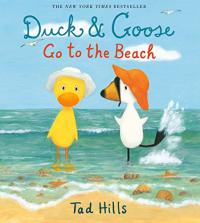
Duck is inspired to take a trip as he and Goose relax in their beautiful meadow. The duo walks to a beach where they meet the locals, explore tide pools, and build a sandcastle before returning home. The feathered friends’ simple adventure exudes gentle humor and warmth in text and illustration.
Duck & Goose Go to the Beach

When young Temple was diagnosed with autism, no one expected her to talk, let alone become one of the most powerful voices in modern science. Yet, the determined visual thinker did just that. Her unique mind allowed her to connect with animals in a special way, helping her invent groundbreaking improvements for farms around the globe. Also included are fun facts, a timeline of events, and a note from Temple.
The Girl Who Thought in Pictures: The Story of Dr. Temple Grandin
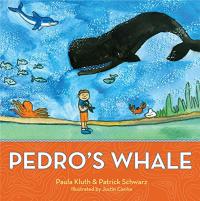
Pedro, a young boy who loves whales more than anything, is heartbroken when he’s told to put away his favorite toy whale on the first day of school. But then Pedro’s teacher discovers the secret to helping him do his best work: not only giving him his whale, but also incorporating his special interest into the whole curriculum. Soon, Pedro’s whale is helping all the children learn, as the teacher works whales into math lessons, storytime, simple science experiments, and more! Pedro’s whale helps him make friends, too, as the other children start to share his special interest.
Pedro’s Whale

Louis, a self-taught space expert is delighted to learn that his teacher has sent him to the principal’s office to attend personal space camp. Eager to learn more about lunar landings, space suits, and other cosmic concepts, Louis soon discovers that he has much to learn about personal space right here on earth. Written with style, wit, and rhythm, personal space camp addresses the complex issue of respect for another person’s physical boundaries. Told from Louis’s perspective, this story is a good resource for parents, teachers, and counselors who want to communicate the idea of personal space in a manner that connects with kids.
Personal Space Camp

All of Louis thoughts are very important to him. In fact, his thoughts are so important to him that when he has something to say, he erupts, or interrupts others. His mouth is a volcano! This story takes an empathetic approach to the habit of interrupting and teaches children a witty technique to capture their rambunctious thoughts and words for expression at an appropriate time. Told from Louis’s perspective, the story provides parents, teachers, and counselors with an entertaining way to teach children the value of respecting others by listening and waiting for their turn to speak.
My Mouth Is a Volcano!

NO is RJ s least favorite word … and he tries his best to convince his dad, his mom, and his teacher to turn No into Maybe or We’ll see or Later or I’ll think about it. Even though he doesn t have much success, RJ keeps arguing until his teacher suggests that he try to join her classroom s Say YES to NO Club. If RJ can learn how to accept No for an answer and to disagree appropriately with his teacher and parents, he can add his name to the club’s Star Board.
I Just Don’t Like the Sound of No!

Louis is a verb! He has a lot of trouble focusing and he is always doing something, but the problem is usually it’s the wrong something. It’s hard to be a verb! My knees start itching, my toes start twitching, my skin gets jumpy, others get grumpy. When it comes to sitting still it s just not my deal. Haven’t you heard… I am a verb! Louis mom teaches him how to focus by showing him a few hands on ideas that anyone can try. A helpful book for all who struggle with paying attention.
It’s Hard To Be a Verb!

Jay can make his own breakfast, dress himself, and play by himself, but sometimes he feels sad and wishes for a friend. When a magical horse appears and befriends Jay, his wish comes true. This interactive book was developed for use with children with developmental and learning differences and disabilities, including autism spectrum disorder, ADHD, and dyslexia. It is designed to help educators, parents, and caregivers teach children about language, reading, story comprehension, functional skills, and basic concepts.
Jay and Ben
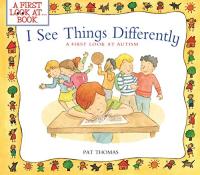
A sensitive, gently illustrated book about helping a child understand autism in a sibling, playmate, or classmate. The storyline is simple and easily accessible to younger children, who will learn that exploring the personal feelings around social issues is a first step in dealing with them.
I See Things Differently: A First Look at Autism

Julie can’t wait to go to the park and feed the ducks with her big sister. Her little brother, Ian, who has autism, wants to go, too. Ian doesn’t have the same reactions to all the sights and sounds that his sisters have. Through its simple plot, the story conveys a complex family relationship and demonstrates the ambivalent emotions Julie feels about her autistic brother. This natural mix of resentment, anger, isolation, loyalty, and love is explained in preliminary notes written by professional pediatric caregivers.
Ian’s Walk: A Story about Autism

When an autistic child joins a mainstream school, many children can find it difficult to understand and cope with a student that is somewhat ‘different’ to them. This story encourages other children to be mindful and patient of the differences that exist and to also appreciate the positive contribution that an autistic child can make to the group.
A Friend Like Simon

A young girl sits next to a boy named Louis at school. Louis has autism, but through imagination, kindness, and a special game of soccer, his classmates find a way to join him in his world. Then they can include Louis in theirs.
Looking after Louis
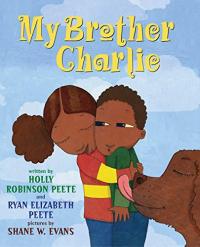
Twins Callie and Charlie have a lot in common, but they are also very different: Charlie has autism. Callie narrates the story, describing what autism is and exploring the issues that come along with it. The theme is of love, patience, and acceptance. Endnotes give a few basic facts for children unfamiliar with autism. The authors, a mother-daughter team, based this story on personal experience. The bright, mixed-media illustrations depict the family’s warmth and concern.
My Brother Charlie

The narrator recalls the time when Tony, a large white draft horse, would pull Tom’s wagon to deliver milk, butter, and eggs. Soft, handsome illustrations evoke an earlier time in this sweet, nostalgic story.
Tony

Three goat brothers attempt to get to a grassy hillside by crossing a bridge under which lives a fierce troll. The traditional tale has been given an innovative new look and also a fresh, surprising, and very satisfying ending.
The Three Billy Goats Gruff

Poetic language provides an introduction to squirrels, their habitats, and behaviors. Collage illustration enhances the information and the energetic tone. Additional information finishes this attractive and informative book.
Squirrels Leap, Squirrels Sleep

A young toddler and his very large dog share a mischievous nighttime adventure. Few words (primarily woof and out!) extend the humorous illustrations to its satisfying and cozy conclusion.
Out!
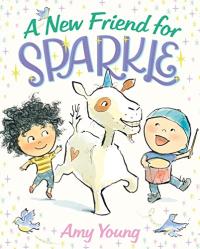
Sparkle, Lucy’s unicorn, becomes a bit jealous when Cole comes over to play. Dance and a drum bring the three friends together in this gentle but illuminating story of friendship.
A New Friend for Sparkle

The race is on and Mama Lion and young Tigey are off! The Italian countryside provides the backdrop for this charming tale of friendship and monkey hijinks. Translucent watercolors illustrate the race with spiffy cars driven by toys come to life are worth reexamining.
Mama Lion Wins the Race

In this wordless fantasy, a girl loses her stuffed fox but finds it in a fantastic forest. This imaginative tale is told in sequential panels (rather like a graphic novel) in which no words are needed.
Little Fox in the Forest

Though well-meaning, the good deeds just don’t turn out quite right when Clifford the big red dog tries to help Mary Elizabeth and her neighbor Tim around town. This vintage edition uses limited color illustration in a humorous modern classic.
Clifford’s Good Deeds

Examine each double page spread in this oversized book. See the realistically pictured animals and where they live. Make up or find a story about them. If you’re curious, you can look in the back for the names of the real animals. Handsome scenes from different natural environments make this a book to examine again and again.
Story Worlds Nature

“Giant Whale or Giant Hoax?” headlines read in the opening of this mostly wordless book. The adventure continues as two young people prepare to find and record the massive mammal through wordless, realistic, highly detailed monochromatic illustrations. Their breathtaking escapade continues until the final spread depicting another newspaper, announcing that the boys have solved the mystery of the spotted whale.
The Whale

The illustration looks like a fairy tale but this book actually dispels the myth of the luxurious life of princesses who lived in the Middle Ages. Not at all like Cinderella, it seems. The smell would have been the moat (filled with potty water), banquet halls cluttered with bones, grease — and rats — you get it. An author’s note and bibliography about the period conclude this myth-buster.
